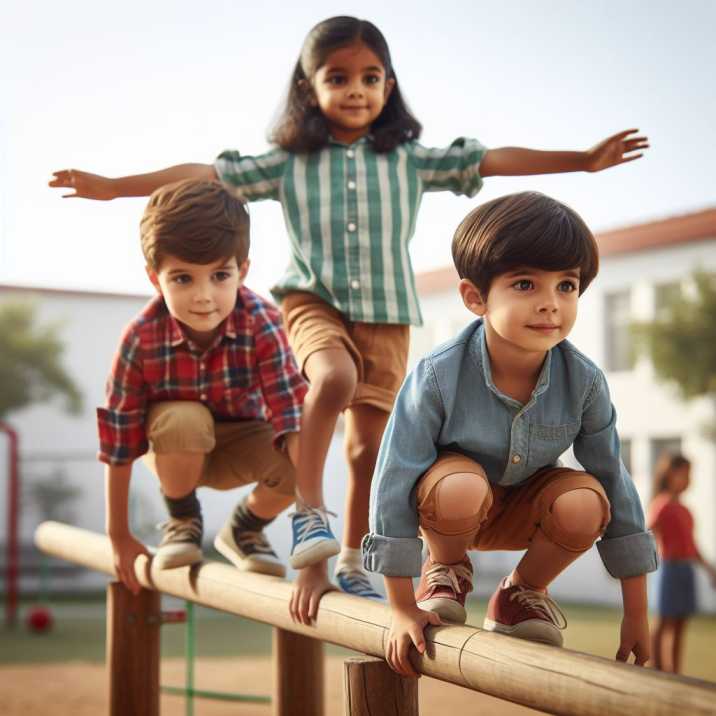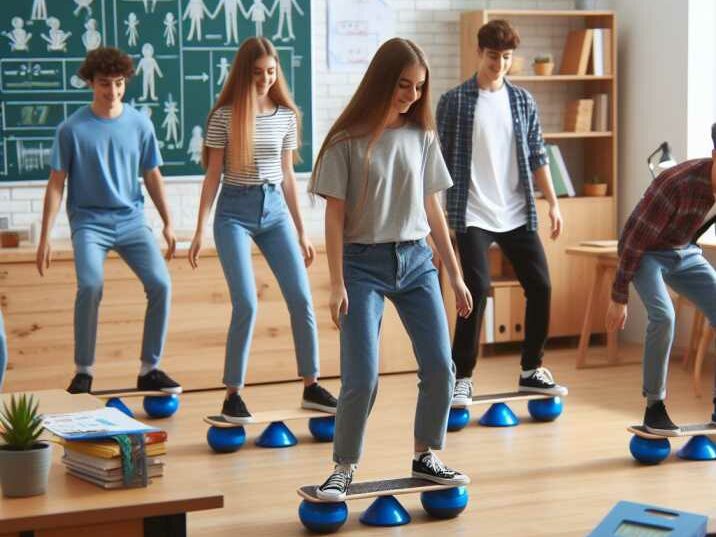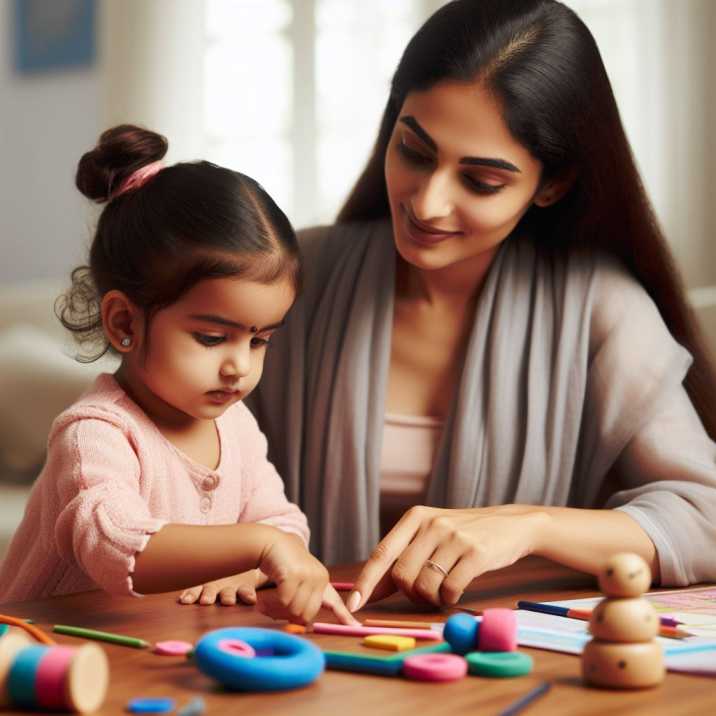Balancing Challenges and Fine Motor Skills
Table of Contents
Introduction
In the journey of child development, the intertwining of Balancing Challenges and Fine Motor Skills plays a pivotal role in development. This article explores the significance of this symbiotic relationship, offering insights for parents and educators. From understanding the basics to practical tips, we delve into the nuances of fostering these crucial skills in children.

Balancing Challenges and Fine Motor Skills: A Fundamental Connection
Balancing Challenges and Fine Motor Skills are not isolated aspects of child development; they are intertwined threads that weave the fabric of a child’s physical and cognitive growth. Understanding this connection is crucial for parents and educators alike.
The Dance of Development: Navigating the Terrain of Balancing Challenges and Fine Motor Skills
Embarking on the journey of nurturing fine motor skills amidst balancing challenges can be likened to a graceful dance. Discover how each step in this developmental dance contributes to the overall growth and well-being of a child.
Decoding Fine Motor Skills: The Building Blocks of Dexterity
Before diving into the challenges of balance, it’s essential to grasp the foundation of fine motor skills. Explore the intricacies of hand-eye coordination, finger dexterity, and other fundamental components that lay the groundwork for a child’s physical abilities.
Balancing Act: Physical Challenges and Their Impact on Motor Skills
Unravel the significance of physical activities and how they contribute to the development of both gross and fine motor skills. From climbing structures to mastering the art of balance, every challenge has a purpose in sculpting a child’s physical capabilities.
The Cognitive Tapestry: Fine Motor Skills and Brain Development
Beyond the physical realm, delve into the cognitive benefits of honing fine motor skills. Learn how the brain’s intricate tapestry is woven through activities that demand precision and coordination.
Balancing Challenges in Educational Settings: Strategies for Teachers and Parents
For educators and parents navigating the educational landscape, discover practical strategies to incorporate balancing challenges seamlessly into learning environments. From classroom activities to home exercises, find the balance that fosters holistic development.

Content:
Balancing Challenges and the Development of Fine Motor Skills go hand in hand, influencing a child’s growth on physical, cognitive, and emotional levels. Understanding the significance of this relationship provides a roadmap for parents and educators to guide children effectively through their developmental milestones.
Starting with the basics, fine motor skills encompass a range of abilities involving the small muscles of the body, particularly those in the hands and fingers. These skills are crucial for tasks such as writing, buttoning a shirt, or tying shoelaces. As children engage in activities that demand precision and coordination, they refine these skills, setting the stage for a lifetime of dexterous abilities.
The connection between balancing challenges and fine motor skills becomes evident when observing children at play. Climbing structures, walking on narrow paths, and engaging in activities that require a steady hand all contribute to the development of these skills. It’s not merely about conquering physical challenges; it’s about honing the ability to control movements and manipulate objects with finesse.
In the intricate dance of development, each step matters. Parents and educators can play a pivotal role by creating environments that stimulate and challenge these skills. Simple activities like building with blocks, threading beads, or drawing can significantly contribute to a child’s fine motor development.
While physical challenges build the foundation, the cognitive benefits of fine motor skill development should not be overlooked. Research suggests that engaging in activities that enhance fine motor skills also stimulates brain regions associated with learning and memory. As children master the art of intricate movements, they are simultaneously strengthening neural connections.
For educators in formal learning settings, integrating balancing challenges into the curriculum can be a game-changer. From incorporating balance boards into physical education classes to implementing hands-on activities in science and art, the possibilities are vast. Likewise, parents can create a home environment that encourages exploration and physical play, fostering the development of both balance and fine motor skills.
In the realm of E-A-T (Expertise, Authoritativeness, and Trustworthiness), it’s imperative to approach child development with a human touch. This means recognizing that each child is unique, progressing at their own pace. Expertise in fostering these skills comes not only from academic knowledge but from a deep understanding of the individual needs and capabilities of each child.

Conclusion:
In the intricate dance of child development, the connection between Balancing Challenges and the Development of Fine Motor Skills emerges as a fundamental aspect. As we’ve explored the symbiotic relationship between these two elements, it becomes clear that their integration is essential for fostering a well-rounded and resilient individual.
From understanding the basics of fine motor skills to navigating physical challenges, parents and educators play a crucial role in shaping a child’s journey. The cognitive benefits, coupled with practical strategies for both home and educational settings, emphasize the holistic nature of this developmental process.
Approaching this topic through the lens of E-A-T (Expertise, Authoritativeness, and Trustworthiness), we recognize that expertise goes beyond academic knowledge—it encompasses a profound understanding of the unique needs and capacities of each child. By embracing the individuality of every young learner, we pave the way for a more compassionate and effective approach to child development.
As we strive to balance challenges and nurture fine motor skills, let us remember that the journey is as important as the destination. Through a blend of expertise, authority, and trustworthiness, we can guide children towards a future where their physical and cognitive abilities harmonize, setting the stage for lifelong success.
FAQs:
- Q: Why are fine motor skills important for a child’s development?
- A: Fine motor skills are crucial for tasks such as writing, buttoning a shirt, and tying shoelaces. They contribute to a child’s physical, cognitive, and emotional growth.
- Q: How can I incorporate balancing challenges into everyday activities at home?
- A: Encourage activities like building with blocks, threading beads, or drawing. These simple tasks can significantly contribute to a child’s fine motor and balance development.
- Q: Are there specific activities to enhance fine motor skills in a classroom setting?
- A: Yes, integrating hands-on activities in subjects like science and art, and incorporating balance boards in physical education classes, can enhance fine motor skills.
- Q: What role do balancing challenges play in brain development?
- A: Engaging in activities that enhance fine motor skills also stimulates brain regions associated with learning and memory.
- Q: Can a child’s individual pace of development affect the integration of balancing challenges and fine motor skills?
- A: Absolutely. Each child is unique, and recognizing and embracing their individual pace is crucial for effective development.
- Q: How can parents create a home environment that encourages both balance and fine motor skill development?
- A: Providing opportunities for physical play, incorporating age-appropriate activities, and ensuring a safe yet challenging space can foster both aspects.
- Q: Are there any toys or tools specifically designed to promote fine motor skills in children?
- A: Yes, toys like building blocks, puzzles, and art supplies can aid in the development of fine motor skills.
- Q: What are some signs that a child may be struggling with fine motor skill development?
- A: Difficulty holding a pencil, challenges with buttoning or zipping, and avoiding activities that require fine motor skills could be indicators.
- Q: Is it possible to overemphasize fine motor skill development, and if so, what are the potential consequences?
- A: Balance is key. Overemphasizing fine motor skills at the expense of other developmental aspects may lead to an imbalance in overall growth.
- Q: How can educators balance the need for fine motor skill development with other educational goals in a classroom setting?
- A: Integrating activities that naturally enhance fine motor skills into existing lesson plans, and collaborating with parents to reinforce these skills at home, can strike a balance.


